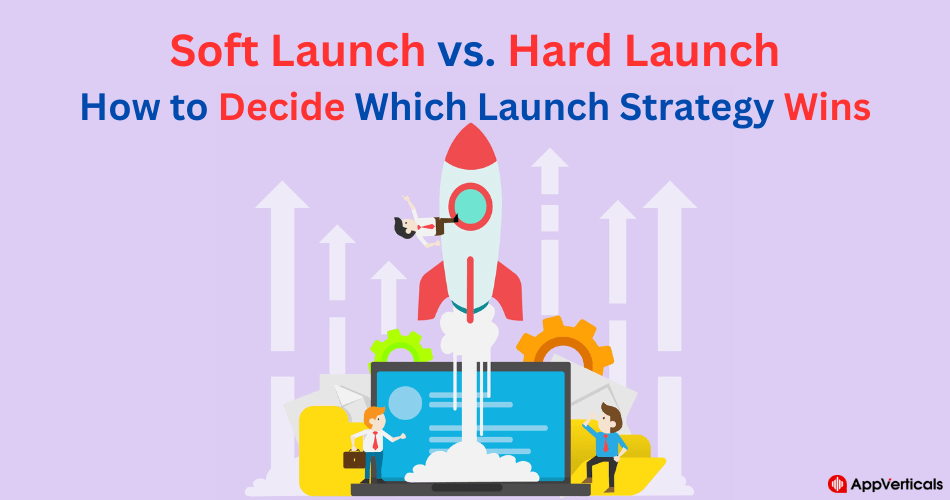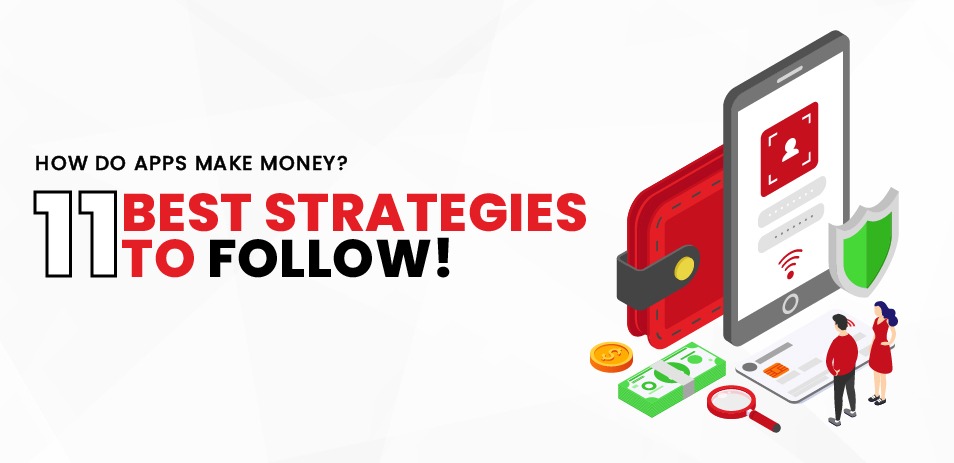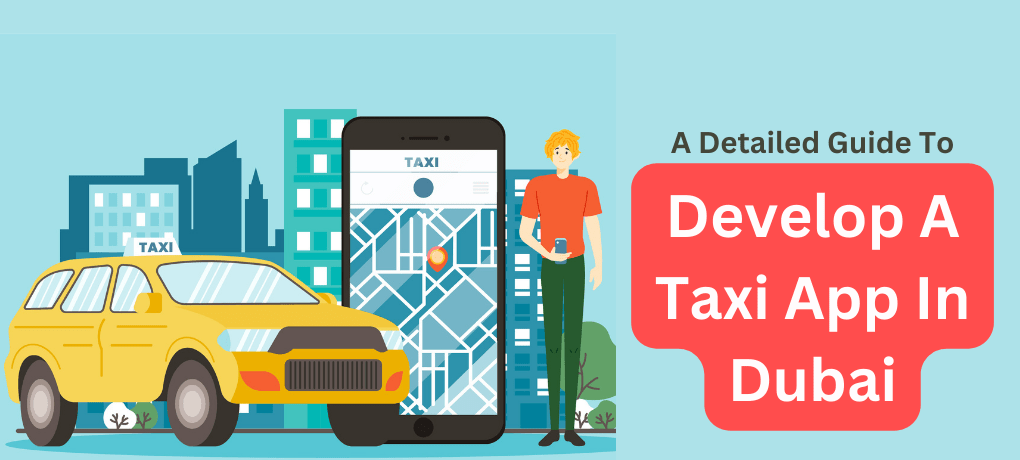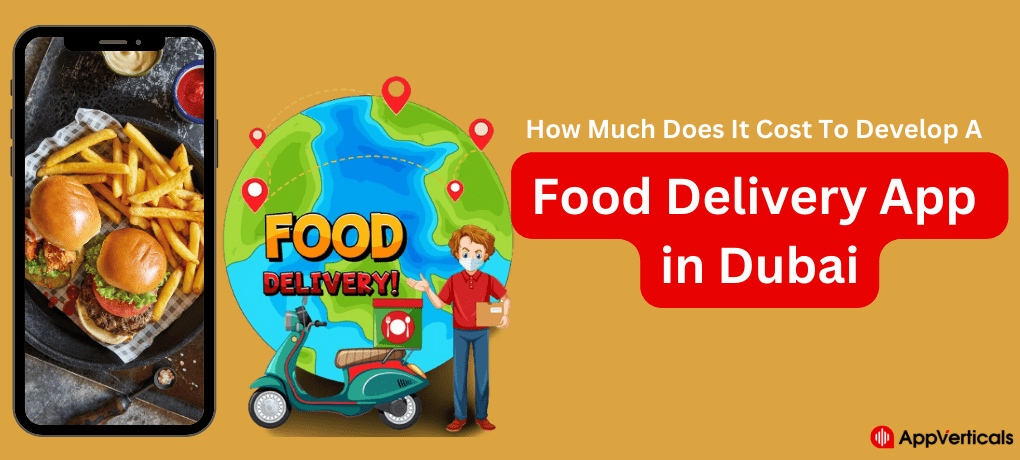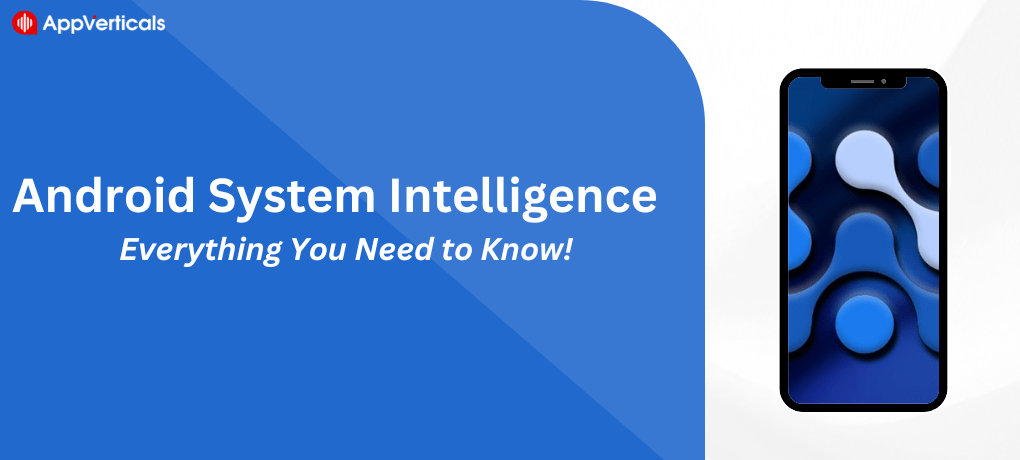You’ve poured your heart and soul into your latest product. It’s innovative and user-friendly, and you know it has the potential to disrupt the market. But now comes the nerve-wracking decision—how do you launch it? Do you go big with a splashy hard launch or take a more measured approach with a soft launch?
Choosing the right launch strategy can be the difference between a triumphant success story and a disappointing fizzle. Here’s the thing: there’s no one-size-fits-all answer. The ideal launch strategy depends entirely on your specific product and goals.
This blog post is your ultimate guide to navigating the world of soft launch vs. hard launch. We’ll delve into the what, the why, and the when of each approach, equipping you with the knowledge to make a confident decision for your next big product launch.
By the end of this post, you’ll be able to answer questions like:
- What does a soft launch mean?
- What are the advantages and disadvantages of a hard launch compared to a soft launch?
So, grab your favorite beverage, settle in, and get ready to launch your product with confidence!
READY TO WIN YOUR MARKET DEBUT?
Let Our Team Help You Simplify The Process, From App Or Web Development To Product Launch.
DISCUSS Your PROJECT!Soft Launch

Imagine pouring your heart and soul into a new product, only to release it to crickets. Yikes! That’s the potential pitfall of a full-blown “hard launch” without any pre-testing. But fear not, innovator! There’s a secret weapon in your arsenal: the soft launch.
So, what exactly is a soft launch? (Wondering about the difference between a soft launch and a hard launch? We’ll get to that in a future section!) A soft launch is like a test drive for your product before it hits the main highway. You release it to a limited audience, gather valuable feedback, and use those insights to refine your creation before the big bang.
Here’s why a soft launch might be the perfect first step for your next big thing:
1. Become a Feedback Magnet:
A soft launch is like having a built-in focus group. By releasing your product to a smaller audience, you get real-world user feedback that you just can’t replicate in a closed testing environment. Imagine early adopters putting your product through its paces – using your app, testing its features, and giving you honest opinions. Surveys, interviews, and even user testing sessions become your tools to harvest this golden intel. Remember, happy early users often become vocal advocates, spreading the word and building excitement for the official launch.
2. Squash Bugs Before They Bite:
Nobody wants to deal with a buggy product launch. A soft launch acts as a bug zapper, helping you identify and fix technical issues before they cause major headaches for a wider audience.
3. Get the Hype Train Rolling:
A successful soft launch can be a masterclass in building anticipation. Here’s the secret sauce: limited availability. By letting a select group use your product before everyone else, you create a sense of exclusivity and intrigue. Imagine the buzz on social media as early users share their experiences! This pre-launch excitement can translate into a surge of interest and a successful official launch.
4. Minimize the Risk Factor:
Launching a product can be nerve-wracking. A soft launch helps mitigate the risk of a full-blown flop. By gathering feedback and refining your product based on real-world use, you’re increasing your chances of a successful official launch.
So, when you’re ready to unveil your masterpiece, consider soft launch. It’s a strategic move that can turn your product from a potential dud to a guaranteed crowd-pleaser.
So You’ve Decided on a Soft Launch: Now What?
While a soft launch offers valuable testing and refinement opportunities, it’s not without its drawbacks. Let’s dive into some key considerations before you decide to “dip your toes” into the market.
Going Stealthy Might Mean Staying Unseen
Imagine unveiling your incredible new game app to a limited audience… only to find crickets chirping. A soft launch’s limited reach can mean lower initial brand awareness. Think of it like showing your movie trailer to just your family – they might love it, but it won’t exactly create a blockbuster buzz. This can be especially challenging if your target audience is broad or geographically dispersed.
If you’re unsure of what to select? Consult with the seasoned mobile app developers company in Dallas! Their experts will help you in every process.
Surprise! (Maybe Not…)
The element of surprise can be a powerful marketing tool with a hard launch. However, with a soft launch, there’s always the risk of information leaks. Even a small release can attract attention from tech blogs or curious users. If details about your product get out prematurely, it can spoil the surprise for your wider audience at launch time.
Is a Soft Launch Right for You?
Now that you’ve seen both sides of the coin, it’s time to decide if a soft launch aligns with your product and goals. Here are some key factors to consider:
- Product Complexity: Is your product a simple app or a complex software program? For intricate products, a soft launch allows you to gather feedback and iron out bugs before a broader release.
- Target Audience: Who are you trying to reach? If your target market is a specific, well-defined group, a soft launch can be a good way to get targeted feedback. However, for a wider audience, a soft launch might not generate enough buzz.
- Marketing Budget: Soft launches generally require less upfront marketing investment than hard launches. This can be crucial if your budget is tight, allowing you to refine your product before a bigger marketing push.
Real-World Examples: Soft Launch Success Stories
Wondering how companies have used soft launches to their advantage? Here are a couple of examples:
- Dropbox: This popular cloud storage service started with a limited beta launch, inviting users only through referrals. This allowed them to gather valuable feedback and refine the product before a wider release.
- Instagram: Initially launched as a photo-sharing app called “Burbn,” Instagram went through a soft launch phase before becoming the social media giant we know today. This allowed them to test features and user engagement before a full-scale release.
There’s no one-size-fits-all answer when it comes to “soft launch vs. hard launch.” By understanding the trade-offs and carefully considering your specific product and goals, you can choose the launch strategy that sets you up for success.
Hard Launch: Going Big and Bold for Maximum Impact

Imagine the scene: a packed auditorium filled with eager fans, a countdown clock nearing zero, and a hush falling over the crowd. Then, with a bang, the latest flagship phone is unveiled – sleek design, cutting-edge features, and a celebrity spokesperson raving about its power. This is a hard launch. Unlike a soft launch, where you test the waters with a limited audience, a hard launch throws open the doors and goes all in to create a major splash in the market.
But before you hit the big red launch button, here’s why a hard launch strategy could be the perfect fit for your next big product reveal.
Creating a Buzzworthy Event:
A hard launch allows you to generate massive pre-launch hype, ensuring everyone’s eyes are glued to your brand. Think about all those viral social media campaigns, splashy press conferences, and strategic influencer partnerships you’ve seen for highly anticipated products. These are all part of a well-orchestrated hard launch designed to get people talking and wanting more.
The Art of the Big Reveal:
Here’s where things get exciting. Your hard launch is your chance to create a memorable event that positions your product as the “must-have” item on the market. Did you know that 82% of marketers believe a strong launch strategy is critical for product success? A hard launch lets you leverage the power of a big reveal, complete with press releases, social media blitzes, eye-catching visuals, and engaging content that showcases all the amazing features and benefits your product offers.
Establishing Brand Authority from Day One:
A successful hard launch establishes your brand as a leader in the market. When you pull off a well-executed launch with a high-quality product, you’re sending a clear message to consumers:
“We’re here to stay, and we’re confident we’ve got something truly special.”
This can be especially powerful if you’re a new brand competing with established players. A hard launch helps you gain instant credibility and carve out your space in the market.
Hitting the Ground Running with Sales:
A well-executed hard launch can generate significant initial sales and market share gains. By creating a sense of urgency and excitement, you incentivize potential customers to jump on board early and be among the first to own your product. This initial surge can set the tone for long-term success and establish a loyal customer base.
So, is a Hard Launch Right for You?
A hard launch requires a significant investment in marketing and resources, so it’s best suited for products with mass appeal and a high level of confidence in their quality and market readiness. But if you’ve got a game-changer on your hands and are ready to make a big splash, a hard launch could be the perfect strategy to propel your product to success.
Also read: MVP in agile
Hard Launch: Going Big or Going Home?
While it can be thrilling, a hard launch also carries some hefty risks. Let’s examine the less-glamorous side of this launch strategy and see if it’s the right fit for you.
The High-Stakes Gamble: Risk of Failure
If your product isn’t well-received, there’s no time for tweaks and adjustments. You’ve invested a significant chunk of your budget in a big marketing push, and negative reviews can spread like wildfire, making it an uphill battle to win back trust.
Limited Room for Improvement: Less Feedback, More Pressure
Remember the saying,
“Two heads are better than one?”
Well, a soft launch lets you gather real-world user feedback before your official debut. With a hard launch, you’re essentially throwing your product out there and hoping for the best. Sure, you can still collect feedback later, but it takes a lot of work to course-correct after a full-scale release.
It’s Going to Cost!
Marketing campaigns, influencer partnerships, and PR efforts all add up. While these are crucial for generating excitement, they can significantly drain your budget. If your product isn’t a slam dunk, you might be left with a hefty marketing bill and a product that needs major changes.
So, When Should You Go All In?
A hard launch is best suited for products you have supreme confidence in, backed by rigorous testing and internal feedback. Think about the iPhone launch – Apple meticulously crafts a user experience and generates massive pre-launch buzz.
Here’s another factor: the competitive landscape. If you’re entering a crowded market with established players, a hard launch might be necessary to make a splash and grab attention quickly.
Finally, consider your marketing resources. Do you have the budget for a full-blown marketing campaign? If your resources are limited, a soft launch might be a more strategic option to test the waters before diving in.
Real-World Hard Launch Wins:
Remember the wildly popular game Pokemon Go? Their hard launch strategy, fueled by augmented reality and a sense of exploration, created a global phenomenon. Another example is the PlayStation 5. Sony heavily invested in pre-launch hype and secured partnerships with major retailers, resulting in a record-breaking launch despite supply chain challenges.
The Takeaway!
A hard launch can be a powerful tool, but it’s not for everyone. Weigh the risks and rewards carefully, considering your product, resources, and the competitive landscape. Sometimes, the most successful launches are the ones that learn and adapt before the big reveal. So, choose wisely, and good luck with your product launch!
CONFUSED BY THE SOFT LAUNCH VS. HARD LAUNCH DEBATE?
Don’t Go It Alone! We Offer Development Services To Optimize Your Product For A Winning Launch.
Build your app!Soft Launch vs. Hard Launch: Choosing Your Weapon
Before you hit the big red button, a crucial decision awaits soft launch vs. hard launch. Each has its strengths and weaknesses, and the best choice depends on your battle plan.
Launch Strategy Smackdown
| Feature | Soft Launch | Hard Launch |
| Goal | Gather user feedback, refine product, build anticipation | Generate maximum buzz and impact, establish brand authority |
| Target Audience | Early adopters, niche markets | Mainstream audience, established brand followers |
| Marketing Focus | User experience testing, targeted campaigns | Large-scale marketing blitz, influencer marketing |
| Cost | Lower | Higher |
| Risk of Failure | Lower | Higher |
| Examples | Snapchat (initially iOS only), Dropbox beta | Apple iPhone launches, PlayStation 5 release |
Launch Strategy by Industry
| Industry | Soft Launch Examples | Hard Launch Examples |
| Fintech | Neobank app focused on Gen Z launches with limited features in a single city | Established bank unveils a revolutionary credit card with a high-profile marketing campaign |
| E-commerce | Clothing brand releases a limited-edition collection through a waitlist | Major retailer launches a new subscription service with a celebrity spokesperson |
| SaaS (Software as a Service) | Productivity tool allows early users to sign up through invite codes | Collaboration software company partners with industry leaders for a global launch event |
The Soft Launch Advantage: Perfecting Your Weapon Before the Fight
A soft launch isn’t about a splashy debut – it’s about a controlled release. Imagine a test run for your product, where you unleash it to a limited audience. This can be incredibly valuable in specific situations:
- Complex Products: If your product has a lot of features or requires a learning curve, a soft launch lets you gather real-world feedback to identify any bugs or areas for improvement before a wider release. Think about a new fitness app with a complex workout program. A soft launch lets you see if users find the program confusing before everyone downloads it.
- Limited Marketing Budget: Going big with a hard launch can be expensive. A soft launch allows you to test the waters with a smaller marketing campaign, gather valuable insights, and refine your approach before a full-scale launch.
Real-World Soft Launch Success:
Remember Snapchat? They didn’t launch globally at once. Instead, they started with a soft launch on iOS for college students. This allowed them to refine the app based on user feedback and build a loyal early adopter base before opening it up to everyone.
The Hard Launch Advantage: Going In with a Bang!
A hard launch is all about making a big splash. Imagine a global marketing campaign, celebrity endorsements, and massive pre-orders. This strategy can be ideal for:
- Well-Known Brands: If you have a strong brand reputation, a hard launch can leverage your existing customer base and generate significant buzz. Think about a new game from a popular developer – they already have a fanbase eagerly awaiting the launch.
- Established Product Categories: If you’re entering a familiar product category (e.g., a new smartphone), a hard launch can quickly grab attention and market share.
Real-World Hard Launch Success:
Apple is the master of the hard launch. Their meticulous pre-launch hype and global marketing campaigns for new iPhones consistently generate massive sales and excitement.
The Hybrid Approach: Mixing and Matching for Maximum Impact
Sometimes, the best approach isn’t purely soft launch or hard launch. You can combine elements of both! For example, you could have a limited soft launch with targeted marketing to gather feedback, followed by a broader hard launch with a wider marketing campaign.
By understanding the strengths and weaknesses of each approach, you can choose the weapon that best equips you to conquer the market!
The Final Decision: A Framework for Success
With all the talk of soft launches and hard launches, you might be wondering: which approach is the right fit for you? Don’t worry; we’ve got you covered.
Here’s a step-by-step framework to help you navigate the “soft launch vs. hard launch” dilemma.
Step 1: Assess Your Product’s Polish
Think of your product like a freshly baked cake. Is it a perfectly frosted masterpiece, ready to wow everyone at the party (hard launch), or does it need a little more time in the oven and some sprinkles of user feedback (soft launch)?
Is your product fully tested and refined? If so, and you’re confident it offers a stellar user experience, a hard launch might be the way to go. But if your product is still under development or you need clarification on certain features, consider a soft launch to gather valuable user feedback and make improvements before the big reveal.
Step 2: Know Your Audience
Who are you trying to reach with your product? Are they early adopters who love trying new things or a more mainstream audience who needs a bit more convincing?
Targeting a tech-savvy crowd familiar with your brand? A hard launch could generate buzz and excitement. However, if you’re entering a new market or targeting a broader audience who might need some education on your product’s value, a soft launch can help you refine your messaging and ensure it resonates before going all-in.
Step 3: Marketing Muscle Check
Launching a product, especially a hard launch, requires marketing muscle. Companies spend approximately 12% of their annual revenue on marketing. Large enterprises spend approximately 13%, whereas smaller businesses spend 10%.
Do you have the budget and resources for a large-scale marketing campaign? If your marketing budget is tight, a soft launch allows you to test the waters and generate some initial interest without breaking the bank.
Step 4: Consider the Competitive Landscape
Is it a crowded pool party with established players splashing around (competitive market) or a pristine, private pool where you can make a big splash (new market space)?
Is the market crowded with established competitors? A hard launch can help you create a big splash and grab attention quickly. However, suppose you’re entering a new market space with less competition. A soft launch can be a strategic way to gather user feedback and refine your product before facing potential challengers down the line.
Also read: 11 impactful healthcare startup ideas to launch your medical business
The Decision Tree: Soft Launch vs. Hard Launch
| Question | Yes | No |
| Is your product still under development and in need of user feedback? | Take the Soft Launch Route | Consider a Hard Launch Once Refined |
| Do you have a limited marketing budget for launch? | A Soft Launch Might Be More Strategic | Prepare for a Hard Launch with a Larger Budget |
| Are you entering a crowded market with established competitors? | A Hard Launch Can Help You Stand Out | Use a Soft Launch to Gather Insights Before Facing Competition |
Need further clarification on your app and web development projects? AppVerticals can do the best job for you!
Wrapping it Up!
Social media and influencer marketing are becoming increasingly powerful tools for generating excitement and brand awareness. These trends might make soft launches even more attractive in the future, allowing you to build a community and gather feedback before a broader rollout.
Remember, there’s no one-size-fits-all answer when it comes to soft launch vs. hard launch. By carefully considering these factors and utilizing this framework, you can make an informed decision that sets your product up for launch success.
FAQs
1. What Does Hard Launch Mean?
A hard launch is a full-fledged product or service introduction with a big marketing push. Imagine a grand opening with red carpets, press releases, and a major marketing blitz. It aims for widespread awareness and immediate impact.
2. What is a Soft Launch?
Unlike a hard launch, a soft launch involves a limited release of your product or service to a smaller audience. This allows you to gather feedback, identify bugs, and refine things before a wider rollout. It’s like a test run before the main event.
3. Hard Launch vs. Soft Launch: When Should I Use Each?
This boils down to your product’s stage of development, risk tolerance, and desired outcome. A hard launch might be ideal for a well-established brand with a highly anticipated product, while a soft launch can be beneficial for new ventures or products needing further refinement.
4. Hard Launch vs. Soft Launch: Can I Have It Both Ways?
While not a traditional approach, some companies might utilize a hybrid strategy. This could involve a soft launch for early adopters followed by a more prominent launch after incorporating their feedback.
5. What Does Soft Launch Mean in Real Life?
There are many soft launch examples in today’s world. A new app might be released only in a specific country before a global rollout. A restaurant might offer a limited menu to a select group before grand opening. These examples illustrate how a soft launch allows for testing and refinement before a wider audience exposure.

